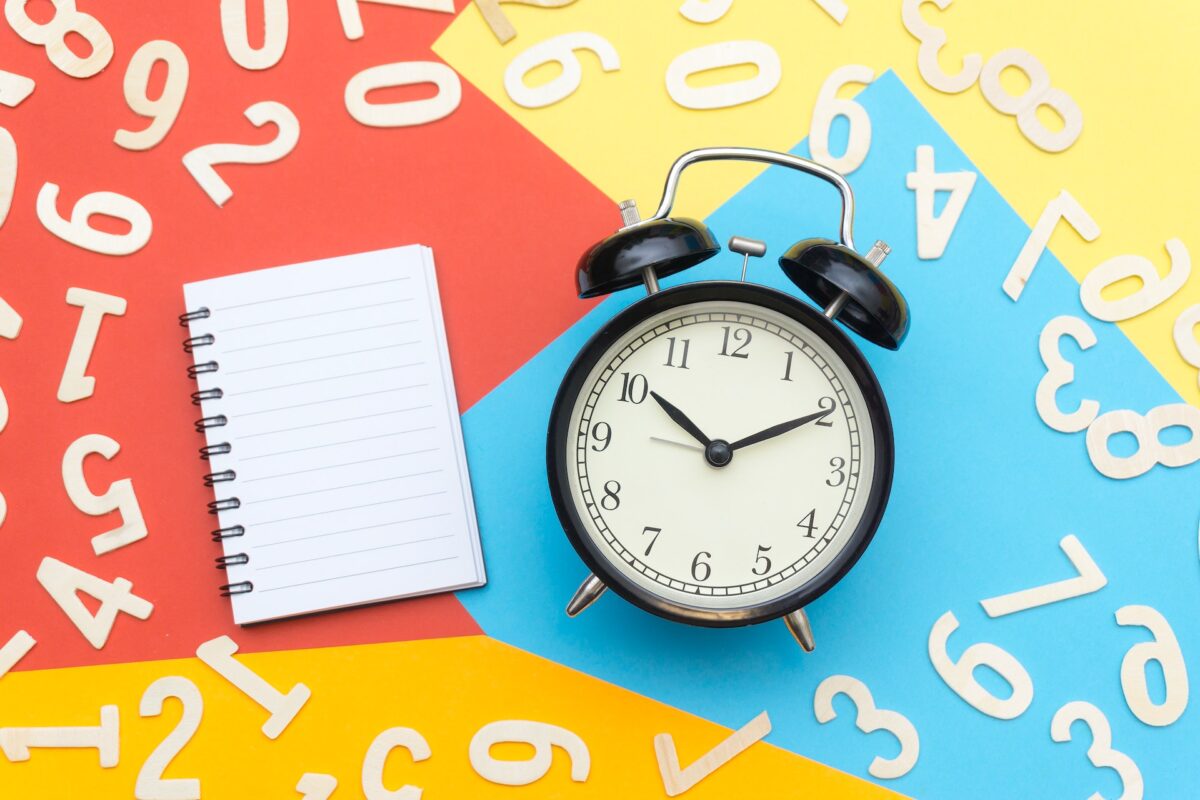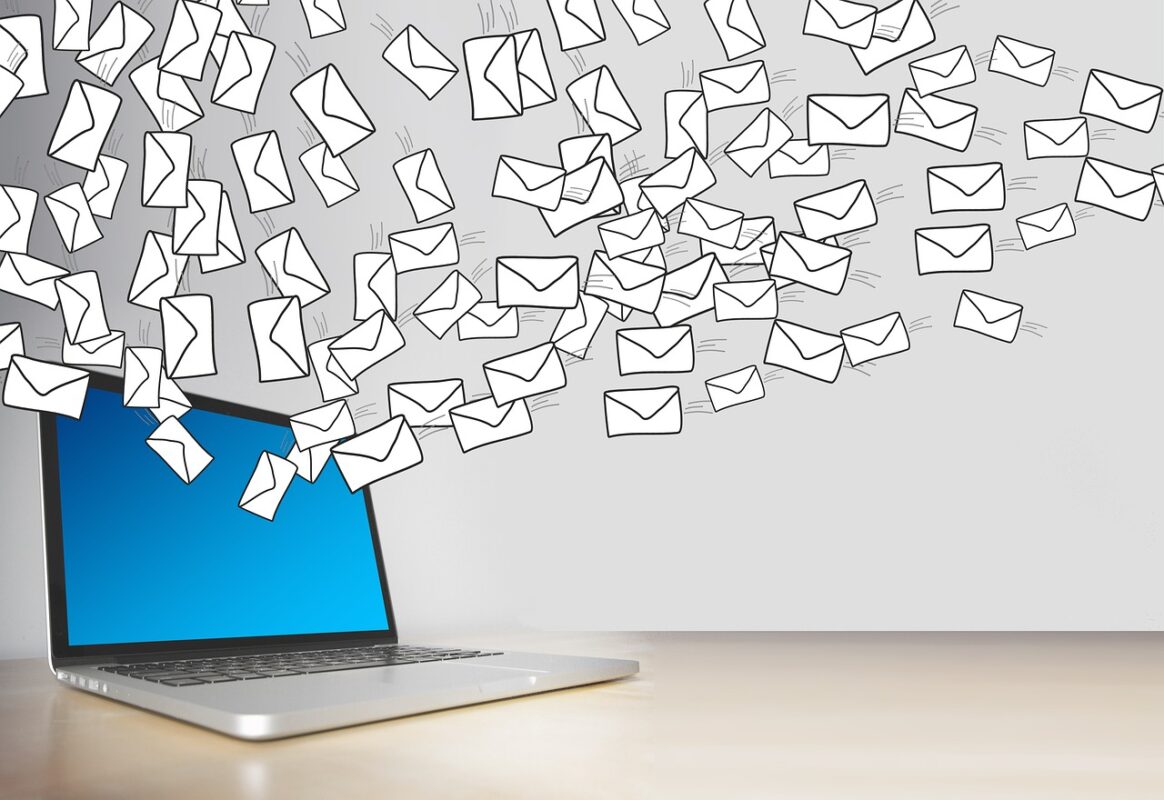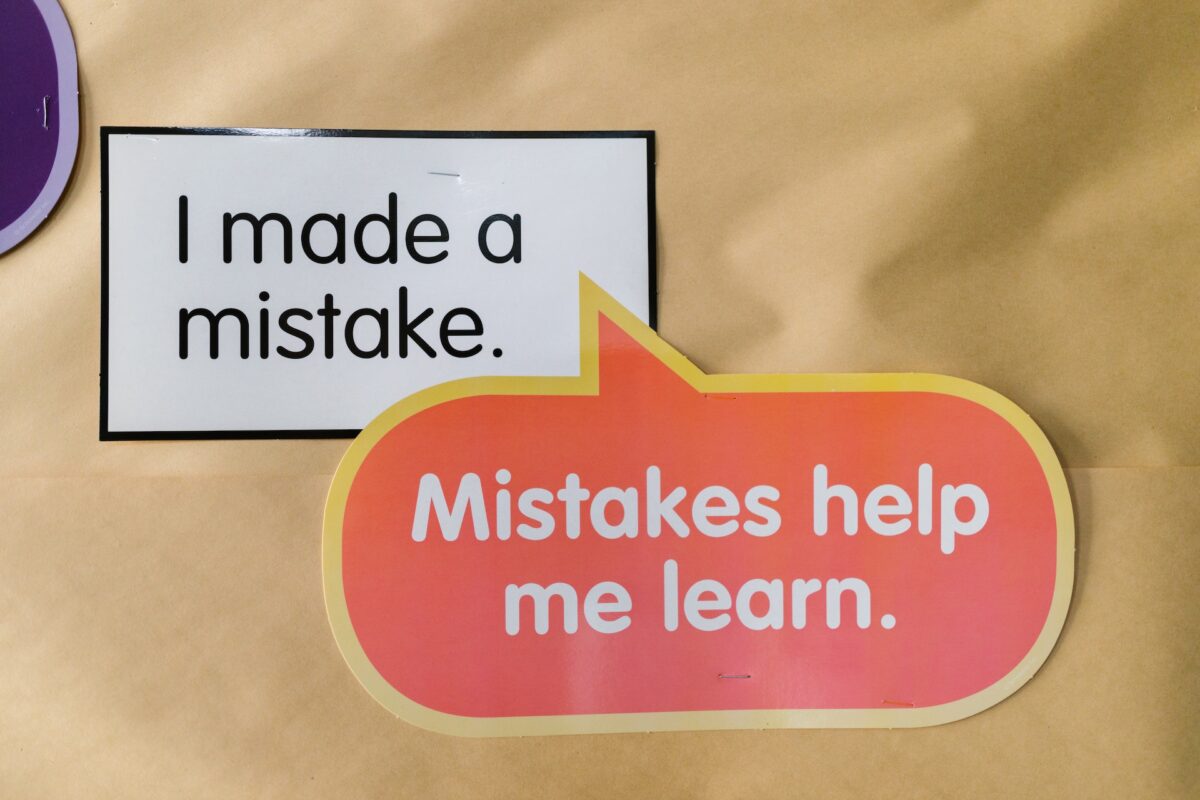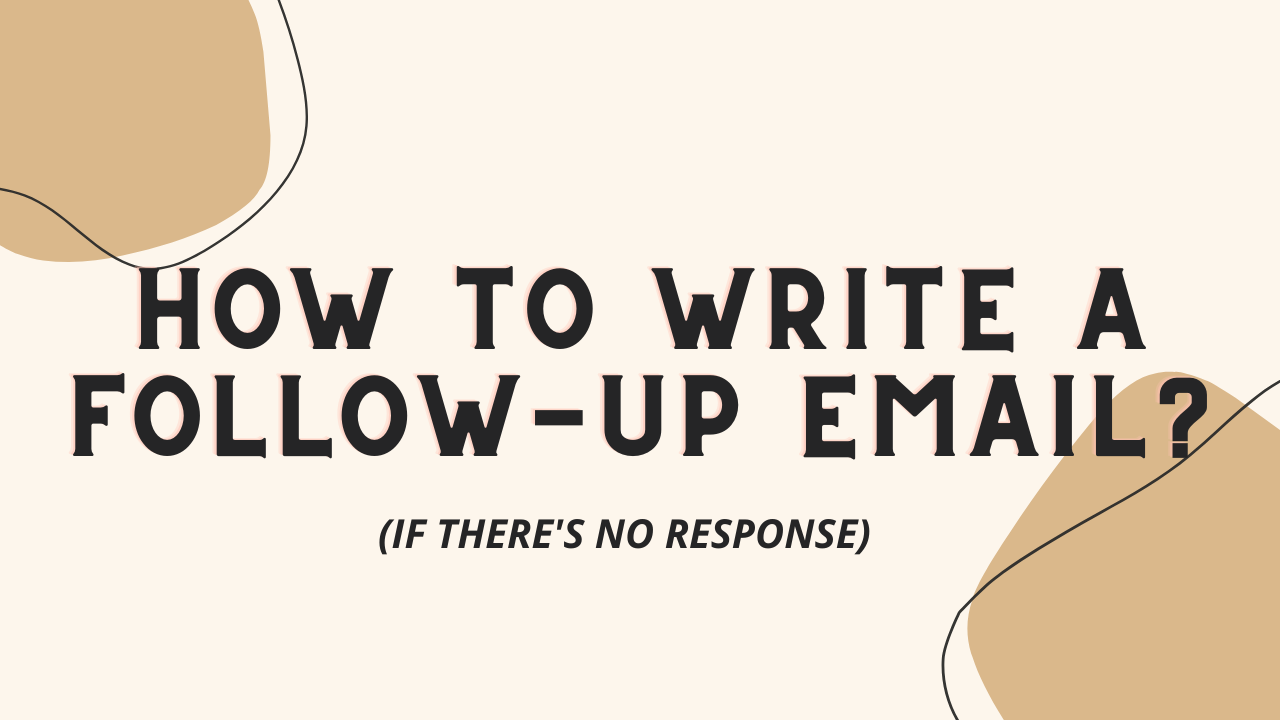Email follow up communication has become an important part of our personal and business lives in today’s fast-paced digital world. We rely on emails to call people and make connections for networking, job applications, or company proposals.
However, sometimes we receive no response to our communications, which can be irritating and discouraging. Perhaps an essential email was sent to a potential client or recruiting manager, and no response was received after several days or even weeks.
In such cases, keep in mind that not getting a response doesn’t necessarily mean that the person is not interested or is ignoring you. There can be several causes for this, including a hectic schedule, an overflowing mailbox, or even technological problems.
So what can you do if you haven’t received a response from your email? The solution is simple: send a follow up email. A follow-up email is a formal and courteous method of reminding the recipient of the original email and expressing your continued interest or concern.
Writing a follow up email, on the other hand, can be difficult, and it’s critical to get it right to avoid appearing pushy or frantic. We’ll guide you through the pros and cons of sending a follow-up email in this article. We’ll teach you how to write an effective and compelling follow up email that will increase the likelihood of getting a response.
This article will also give you the tips and tactics you need to write an attention-grabbing follow-up email, whether you’re looking for a job, trying to acquire a new client, or requesting information on a project. So let’s get started!
What is a Follow Up Email?
A follow-up email is a type of communication tool used to communicate with someone after an original email or interaction.
When you have sent an e-mail or made a request and haven’t received a response within a reasonable period of time, you should send this type of e-mail. A follow up email is a formal and courteous method of reminding the recipient of the original communication and expressing your interest in continuing the communication.
Follow-up emails, such as business, networking, and personal connections, are important when contact is critical. They help ensure that communication is maintained and that progress toward an objective or goal is achieved.
Follow-up emails can be used for a number of purposes, including job applications, sales and marketing, project management, customer service, and networking.
For example, if you have applied for a position and haven’t heard back after a week, you can send a follow up email inquiring about the status of your application. Similarly, if you’re trying to complete a transaction or win a new customer, a follow-up email can help keep the conversation going and show your dedication to the relationship.
A follow-up email can be used to provide additional information, clarify a point or seek information, as well as express ongoing interest or concern. For example, if you send a proposal to a potential client, a follow-up email can be used to address any concerns they may have and provide additional details that may persuade them to work with you.
It’s essential to be courteous and competent when sending follow-up correspondence. Avoid using demanding or harsh language because it can be off-putting and may damage the connection. Instead, keep your statement brief, clear and polite. Doing so improves your chances of getting a response and maintaining a good relationship with the recipient.
Types of Follow Up Email
Depending on the circumstances and the purpose of your mailing, you can use a variety of follow-up emails. Here are some examples of typical follow-up emails:
- Follow-up email reminder: This form of email is used to remind someone of a deadline, occasion, or appointment they may have forgotten about. To give the recipient enough time to respond, send this follow-up email form a few days before the date or event.
- Inquiry follow-up email: This form of email is used after sending an email with a question or request and not receiving a response. This email is to check the status of your application and convey your ongoing interest or concern.
- Follow-up email for comments: This type of email is used to seek feedback on a proposal, initiative, or presentation. The purpose of this email is to solicit feedback on your work and make any necessary adjustments or improvements based on the comments.
- Networking Follow-up Email: This form of email is used to follow up on a networking meeting or meeting connection. This email aims to continue the discussion and convey your desire to maintain the friendship.
- Follow up email for sales: This form of email is used to follow up on a sales proposal or presentation. The purpose of this email is to remind the recipient of the plan and to resolve any questions or concerns they may have.
- Job Application Follow-up Email: This email is sent after you apply for a position but do not receive a response. This email is intended to inquire about the status of your application and convey your continued interest in the job.
Regardless of the form of a follow-up email you use, it’s critical that you’re clear, concise, and professional in your mailing. Include any pertinent details, such as deadlines or meeting times, and always show appreciation for the recipient’s time and thought.
Why Should You Send a Follow Up Email if There is No Response?

If you haven’t received a response to your initial communication, sending a follow-up email is essential for several reasons. Here are some reasons why sending a follow-up text message is critical.
A follow-up email reminds the recipient that they didn’t respond to your initial communication. The recipient may have forgotten or overlooked your original communication; a follow up email may bring it back to your attention.
A follow-up email shows your interest and commitment to the conversation or connection. Show that you respect the recipient’s time and effort and that you’re ready to go the extra mile to maintain the relationship or achieve the goal.
Use a follow-up email to provide an explanation or additional information that may help the recipient respond to your original message. It’s conceivable that the recipient didn’t understand your original communication or that additional information may be required to respond successfully.
Professionalism and excellent communication skills are demonstrated by sending follow-up correspondence. Demonstrate that you’re proactive, courteous, and tenacious, all of which are essential characteristics in work and personal relationships.
Sending a follow-up email gives you finality and allows you to continue with your plans. If you do not receive a response to the original communication, it may be left in limbo, which can be frustrating and time-consuming. A follow-up email gives you the option to receive a response or move on to other alternatives.
In summary, writing a follow-up email is critical for several reasons. It shows your attention and dedication, offers clarification, and shows professionalism. If you do not receive a response to your original communication, a follow-up email can serve as a reminder and closure, allowing you to move forward with your plans.
When to Send a Follow Up Email with No Response?

Knowing when to send a follow-up email can be difficult because it requires a delicate balance of perseverance and consideration for the recipient’s time and task. Here are some general guidelines to keep in mind when sending a follow-up email after receiving no response.
Allow sufficient time for the recipient to respond to your original communication before sending a follow-up email. The time required will differ according to circumstances, but a decent rule of thumb is to allow at least 2-3 business days.
If the situation is critical or urgent, it may be best to write a follow-up email as soon as possible. However, be sure to convey the importance of the situation clearly and respectfully.
If you know that the recipient is particularly busy or has a heavy task, it may be better to delay sending a follow-up email a little longer. Respect their time and effort by refraining from writing numerous follow-up emails in a short period of time.
The choice to send a follow up email will ultimately be determined by the particular circumstances of your correspondence or connection with the recipient. Consider variables such as the importance of the topic, your connection to the recipient, and the context of the circumstance.
Whenever you write a follow-up email, keep your tone professional and courteous. Always show your appreciation for the recipient’s time and concern rather than appearing impatient or frustrated.
To summarize, understanding when to send a follow-up email can be difficult, but it’s critical to achieving a balance between persistence and consideration of the recipient’s time and burden.
When deciding when to send a follow-up email with no response, consider the conditions and use your best judgment. Always maintain a professional and courteous tone, and show appreciation for the recipient’s time and thought.
What Title to Choose for a Follow Up Email with No Response?
Choosing an appropriate subject line for an unanswered follow-up email can make or break the recipient’s likelihood of reading and responding to your message. Here are some suggestions for creating an effective title:
- Be clear and concise: The title of your email should clearly convey the purpose of the email and be brief enough to fit in the subject line. Avoid using ambiguous or misleading titles that may confuse or frustrate the recipient.
- Use a courteous tone: Even if you’re following up on an urgent or necessary problem, your post should communicate courteously and deferentially. Avoid using confrontational or harsh words that may discourage the recipient.
- Reference the original message: Mentioning the original message in the subject line can help refresh the recipient’s memories and provide context for your follow-up email. You could use a heading such as “Follow-up to our meeting last week” or “Regarding your request for details,” for example.
- Offer value or benefit: Include a benefit or value proposition in your subject line if feasible to entice the recipient to open and read your email. You could, for example, use the heading “New study on your business” or “Collaboration opportunity”.
- Be honest: The subject line should correctly represent the content of your email and should not be misleading. Avoid using clickbait titles, damaging your credibility and relationship with the recipient.
In short, selecting an effective title for a follow-up email that didn’t get a reaction requires careful consideration of the recipient’s point of view and requirements.
Be clear and concise, use a courteous tone, refer to the initial communication, provide value, and be sincere. Following these guidelines increases the likelihood that the recipient will see and respond to your follow-up email.
Examples of Follow-Up Email Subject Lines
Creating an effective follow-up email subject line is critical to increasing the likelihood that your email will be seen and responded to. Here are some examples of follow-up email subject lines to get you started:
- Register: “Follow-up to our meeting last week.”
- Reminder: “Our call is scheduled for tomorrow.”
- Follow-up request: “Your proposal for our project.”
- Seeking clarity: “Question about our previous communication.”
- Urgent follow-up: “About the status of our order.”
- Update only: “Update on our progress.”
- Feedback needed: “Your opinion about our proposal.”
- Important update: “Change in meeting time.”
- Finalizing details: “Confirming our next appointment.”
- Urgent request: “I need your contribution as soon as possible.”
- Second attempt: “Follow up on your response to our offer.”
- Additional information: “Answer to your question.”
- I thought you might be interested in: “New developments in our industry.”
- Long time no see: “Reconnecting with an old contact.”
- Thank you for your time: “Summary of our meeting.”
- Seeking their guidance: “I need your expertise on a matter.”
- Availability check: ” Arranging a meeting with you .”
- Looking forward to collaborating: “Opportunity to work together.”
A good follow-up email subject line should be direct, concise, and engaging. Use these examples as a starting point to create unique subject lines for your message and context.
Remember to maintain a polite and considerate tone, and avoid using clickbait or misleading subject lines, which can damage trustworthiness. Following these recommendations increases the likelihood that the recipient will read and respond to your follow-up email.
How to Write a Follow Up Email After Not Getting a Response?
When a recipient doesn’t respond to an e-mail, the sender may feel frustrated and anxious. Sending a follow-up email, on the other hand, can be an efficient way to re-engage the recipient and provoke a reaction. Here are some guidelines for writing a follow-up email after not receiving a response:
Begin with a polite greeting: A polite greeting, such as “Hello” or “Dear [recipient’s name],” establishes a deferential tone and can help reestablish a bond with the recipient.
- Acknowledge the previous message: Mentioning the previous message sent in the opening line can help refresh the recipient’s memory and provide context for the follow-up e-mail. For example, “I hope this email finds you in good health. I am following up on the email I sent you about [subject] last week.”
- Keep it short and to the point: A follow-up email should be concise and focused on the purpose of the message. Avoid going too deep or giving too much information. A concise and direct communication is more likely to be favorably received by the receiver.
- Provide a reason for follow-up: A justification is required for follow-up communication. The recipient may not have received the previous email, or it may have been lost in their inbox. A clear and concise explanation can help explain the follow-up and improve the likelihood of a response. “I am following up to see if you have any further concerns about the plan I sent you last week,” for example.
- Offer assistance: In some cases, the recipients may not have responded because they need additional information or help. Offering additional explanations or assistance may motivate them to respond. “Please let me know if there is anything I can do to help you make a decision,” for example.
- End on a positive note: End the email on a positive note, such as “Thank you for your time and thoughts” or “I look forward to hearing from you shortly”. This creates an excellent first impact and motivates the recipient to react.
- Follow-up again: If the recipient doesn’t respond after the first follow-up email, it may be necessary to follow up again. However, it’s essential to avoid becoming demanding or aggressive in conversation. Simply repeat the cause for follow-up and politely say, “I am following the plan I sent last week once again. If you need more details or explanations, let me know.”
Finally, writing a follow-up email after not receiving a response can be an effective way to re-engage the recipient and get a response. Following these guidelines will help you write a polite, concise, and effective follow-up email that improves your chances of receiving a response.
What to Include in a Follow Up Email if There is No Response?
When you send a follow-up email after not getting a response, include specific information that will entice the recipient to respond.
It’s essential to inform the recipient of the previous e-mail sent in the first line of the e-mail. This serves as a polite reminder of your previous request and can help set the stage for your follow up email. You can include a brief summary of the previous email, such as the subject line, the date it was sent, and a summary of its contents.
A clear call to action is the most essential component of follow-up communication. This should be a particular request or query to which the recipient should respond. You might, for example, request information about a plan, proof of a meeting time, or a response to a query you raised in a previous email. Make it obvious what action the recipient should take, and be precise about what you’re looking for.
Depending on the nature of your email, you may want to include additional information that will help the recipient understand the context of your request. Attachments, links to relevant resources, or additional reference material may be included. However, be careful not to overwhelm the recipient with information, as this can make your email seem unclear and unfocused.
Consider including a personal touch related to the recipient in your follow-up email to make it feel more personal and engaging. For example, you might suggest a recent article you’ve read that you think he would enjoy or ask about his most recent vacation or projects. This can help establish a relationship with the recipient and increase the likelihood that they will respond to your email.
Finally, you should show gratitude for the recipient’s time and attention. This can help you make a good first impression and make the recipient more open to your proposal. You could show gratitude for their consideration or thank them for their help. Express your thanks sincerely and avoid using overly official or stilted language.
Examples of Follow Up Emails After No Response Received
Sending a follow-up email after not getting a response can be tricky. It’s critical to be courteous and competent in communicating the urgency of your request. Here are some follow-up emails you can use to help you write your message.
In each of these cases, the writer is courteous and competent while emphasizing the importance of your request. You can write a follow-up email that’s likely to elicit a reaction from the recipient if you follow these recommendations.
Remember to be patient and persistent, as receiving a response may require several follow-up emails. Adopting the right strategy can improve their chances of receiving the information or response you need.
Example 1: Follow-Up of an Application for Employment
Subject: Verification of my application status
Dear [name of hiring manager],
I hope this email finds you well. I wanted to follow up on the job application I sent for the [Job Title] position at [Company Name]. I am very interested in this position and believe my experience and skills would make me a valuable addition to your team.
I submitted my application on [date] and wanted to check the status of my application. I understand that you may have received many applications, but I would appreciate any updates you can provide.
Thank you for your time and consideration. I look forward to hearing from you soon.
Sincerely yours,
[Your name].Example 2: Follow-Up of a Sales Proposal
Subject: Follow-up of our proposal for [Company name].
Dear [Client’s name],
I hope this email finds you well. I wanted to follow up on the sales proposal we sent you on [date]. We believe our solution would perfectly fit your company and would be happy to discuss it further.
I understand that you may have a busy schedule, but I would appreciate any updates you can provide on your decision-making process. If you have any questions or concerns about the proposal, please feel free to contact me directly.
Thank you for your time and consideration. I look forward to the opportunity to work with you.
Sincerely yours,
[Your name].Example 3: Follow-Up of an Information Request
Subject: Information Follow-Up Request
Dear [Recipient’s name],
I hope this email finds you well. I wanted to follow up on the request for information I sent you on [date]. I am very interested in more information on [Topic] and would appreciate any updates you can provide.
If you have any questions or concerns about my application, please feel free to contact me directly. I understand that you may be busy, but I believe this information would be valuable to [Reason for request].
Thank you for your time and consideration. I look forward to hearing from you soon.
Sincerely yours,
[Your name].Example 4: Follow-Up of a Meeting Request
Subject: Follow-up on meeting request for [date]
Dear [Recipient’s name],
I hope this email finds you well. I wanted to follow up on the meeting request I sent you on [Date] regarding [Meeting Purpose]. I understand you may be busy, but I wanted to confirm if you could attend the meeting on [proposed date and time].
If the proposed date and time are not convenient for you, let me know, and we can coordinate a different time. I believe this meeting would be valuable to [Reason for the meeting], and I look forward to hearing from you soon.
Thank you for your time and consideration.
Sincerely yours,
[Your name].Example 5: Follow-Up on the Payment of an Invoice
Subject: Reminder of the outstanding invoice for [Company name].
Dear [Client’s name],
I hope this email finds you well. I wanted to follow up on the outstanding invoice for [Invoice Number] that we sent you on [Date]. As a reminder, the total amount due is [Amount], and the payment deadline was [Payment Deadline].
I understand that there may be some confusion or delay in payment processing, but I wanted to confirm if there is any update regarding the payment status. Let me know if there is a problem with the invoice, and we can resolve it as soon as possible.
Thank you for your attention to this matter. I look forward to receiving payment soon.
Sincerely yours,
[Your name].How Many Follow Up Emails to Send if There is No Response?

Knowing how many times to send follow-up emails after getting no response can be challenging. While there is no one-size-fits-all answer, there are some variables to consider when determining how many follow-up emails to send.
First, evaluate the seriousness and significance of the situation in question. If the problem is urgent, it may be acceptable to send several follow-up emails quickly to ensure that the recipient has received the message and can react appropriately.
However, if the problem is less urgent or the request is straightforward, it may be best to restrict the number of follow-up emails to avoid overburdening the recipient.
Another element to consider is the recipient’s connection to you. If the author has a close professional or long-standing personal relationship with the recipient, it may be acceptable to send a few more follow-up emails than if the recipient is a new contact or has had limited correspondence in the past.
After getting no response, a decent rule of thumb is to send no more than three follow-up emails. The first email may simply inform the sender that you’re waiting for a response and would appreciate an update or confirmation. The second email may include additional information or background information and a polite request for a response. The third and final email may be a last-ditch effort to generate a response while acknowledging that the author is aware of the recipient’s hectic schedule or other responsibilities.
It’s critical to keep in mind that if the recipient has clearly stated that they aren’t interested or do not wish to explore the matter further, it’s best to comply with their wishes and refrain from sending follow-up emails.
It’s also essential that letters be courteous, professional, and not aggressive or confrontational in tone.
In general, the number of follow-up emails you should write after not getting a response is determined by the case’s specific circumstances. However, senders can make an informed decision about the appropriate number of follow-ups to send by considering the urgency and importance of the issue, the connection to the recipient, and the overall tone and substance of the emails.
Follow Up email if There is No Response: Common Mistakes

Email follow-up is an important component of business contact. However, when it comes to following up after not getting a response, several common mistakes people make can hinder their ability to get the response they’re looking for.
Following up after not getting a response is essential to professional communication. However, typical mistakes to avoid include being too aggressive, sending too many follow-up emails, not providing context or information, using a generic subject line, etc.
Senders can increase their chances of getting a response and achieving the desired result by avoiding these mistakes and following best practices for professional communication.
1. Being Overly Pushy or Aggressive
One of the most common mistakes people make when writing follow-up emails is using an aggressive or pushy tone. This may make the recipient feel uncomfortable or combative and even cause them to ignore the email. Instead, follow-up communication should be courteous, professional, and respectful.
2. Sending Too Many Follow-Up Emails
While following up after not getting a response is essential, writing too many follow-up emails can quickly become annoying or overwhelming to the recipient. It’s critical to strike a balance between persistence and consideration of the recipient’s time and objectives.
3. Not Providing Context or Information
If the initial email lacked background or information, it’s critical to include it in the follow-up email. This can help the recipient understand the request or problem at hand, as well as simplify your response.
4. Using a Generic Subject Line
The subject line is the first thing the recipient sees when opening an e-mail, so it must be obvious and precise. Using a generic subject line, such as “Follow-up”, can result in the e-mail being buried in the recipient’s mailbox. Instead, use a subject line that expresses the purpose of the e-mail, such as “Follow-up on XYZ Corp meeting request.”
5. Not Checking or Correcting
Spelling and grammatical errors can make an email look unprofessional and cause the recipient to discard it. Review the email carefully before sharing it to ensure there are no errors.
6. Sending Email at the Wrong Time
The timing of follow-up communication is as essential as its substance. If the email is sent at a time when the recipient is likely to be busy or stressed, it may go unnoticed. When sending an email, keep in mind the recipient’s schedule and objectives.
7. Not Recognizing the Recipient’s Perspective
There may be a reason why the recipient didn’t respond to the initial email. In the follow-up email, it’s critical to acknowledge your point of view and politely request an update or clarification. This can help establish trust and a relationship with the recipient, which increases the likelihood of a response.
8. Being Too Informal
While business letters should be courteous and friendly, they should also maintain a certain degree of formality. Using casual or slang language in an email can make it appear unprofessional and cause the recipient to take it less seriously.
9. Forgetting to Follow Up at All
The most common mistake is neglecting to follow up. If a response is anticipated but not received, it’s critical to follow up promptly and professionally to ensure that the issue is not forgotten.
Conclusion
Finally, whether you’re trying to conclude a business transaction, secure a job interview, or get a response from someone you’ve been talking to, sending a follow-up email can help you get there.
Despite its importance, it’s easy to see why many people struggle to write an effective follow-up email. The pressure to find the right combination of professionalism and persistence while avoiding common mistakes can be overwhelming.
However, with the right strategy and a few easy tips, anyone can write a successful follow-up email that achieves the desired result. Remember to be brief and direct while remaining polite and pleasant. It’s also essential to avoid common mistakes such as being too insistent or not giving the recipient enough time to respond.
In addition, selecting a compelling subject line can make or break whether your email is read. Remember to use particular and relevant wording that emphasizes the importance of your message.
Finally, don’t hesitate to send numerous follow-up emails as long as you distribute them and don’t appear pushy. Persistence often pays off in the end, demonstrating that you’re sincere and dedicated to achieving your goals.
You can increase your chances of success in any circumstance where communication is critical by following these simple tips and remembering the importance of follow-up emails.
A well-crafted follow-up email can make all the difference when it comes to closing a deal, getting an interview, or simply getting a response from someone you’ve tried to contact. Take the time to write a thoughtful and professional note, and don’t hesitate to follow up until you receive the desired response.
Frequently Asked Questions
Following up with unresponsive recipients helps increase engagement, reminds them of your message, and enhances the chances of receiving a response.
Your follow-up email should be concise, polite, and reiterate the main message. Avoid being pushy and consider offering additional value or information.
It’s best to follow up two to three times, spaced at appropriate intervals. Avoid excessive follow-ups to prevent appearing overly persistent.
Clear and personalized subject lines tend to perform well. Mentioning the previous email or providing a benefit can increase open rates.
Personalization, addressing previous concerns, and offering unique insights or content can make your follow-up email more engaging and memorable.

